Good morning all. It's over to my guest blogger today for a little tour of some of London's little-known hotspots...
After my visit to Bletchley Park I drove further south and stayed overnight in London. Next day a relative had organised a walk round some of the lesser known parts (and some of the more well-known). We headed by tube to Blackfriars and began walking from there. The origin of name Blackfriars itself goes back to the 14th cent. It comes from the black cappa worn by Dominican Friars and the Friars part comes from the French word frères meaning brothers. Close by we saw this very unusually named church:
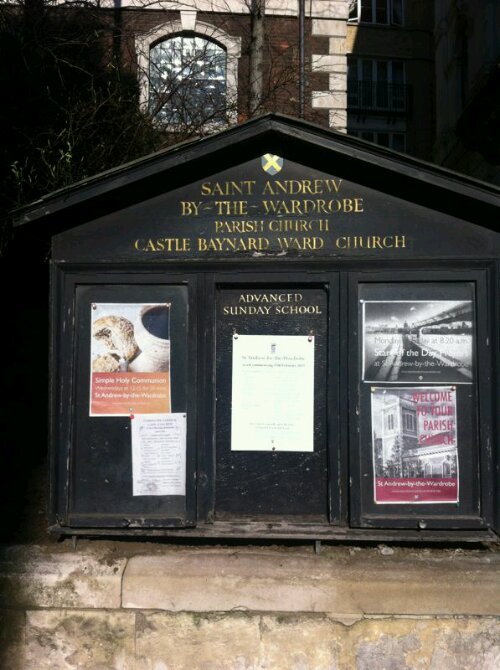
Now if you’re wondering how a parish church can get a name like St Andrew By-The-Wardrobe I can tell you it goes way back in history to 1170. However the “wardrobe” bit of the name did not come about till 1361. Apparently Edward III (1312-77, reigned 1327-1377) moved his royal wardrobe (included, arms, clothing & personal stuff) to somewhere just near the site of the church and so that’s how it got its current name because it was near (or “by”) the king’s wardrobe.
Next we came to the College Of Arms. Now this is nothing to do with weapons. It’s all about coats of arms. It’s the place which oversees the granting of various heraldic symbols, shields & town crests used by various councils and individual families across England, Wales & N.Ireland. If you want your family to have its own crest or coat of arms it’s to them you have to apply. (It’s not cheap by the way!). Here’s the entrance:
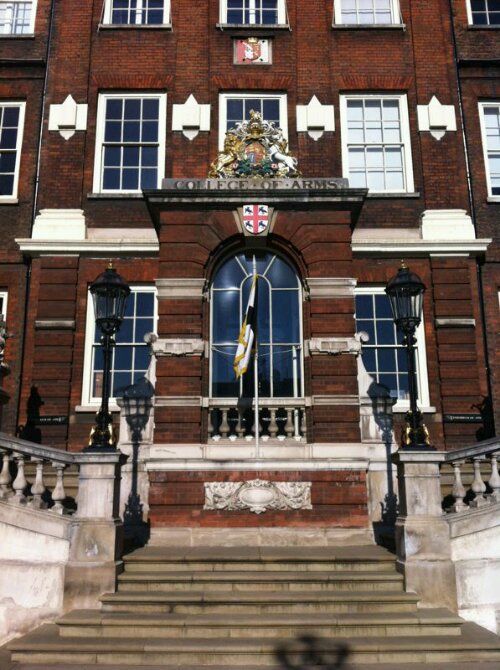
You can just see the name above the shield over the centre window. It was founded by Richard III in 1484. (His remains, as you may have seen in the news recently, have just been found in Leicester buried under a car park!). Although a royal corporation, with heralds appointed by the British sovereign, they are self-financing and receive no state funding.
Now if you or I decided to make up and use our own coat of arms or indeed someone else’s without their permission we could be brought into the courtroom at the College of Arms. Here’s the pic.
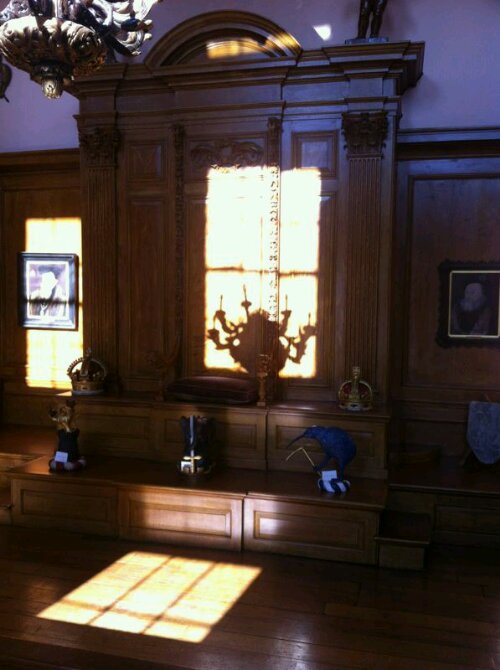
This is where you would be tried for your crime of using an unauthorised coat of arms or misusing someone else’s.
Next stop was The Monument. It’s only ever called that and most people know it only by that name. Many people don’t know what it’s a monument to; I also didn’t. It was designed by Christopher Wren & Thomas Hooke and commemorates The Great Fire Of London (1666); it was built 1671-77. Interesting things about it: it is 202ft (62m) tall and lies 202ft from the place where the fire started in Pudding Lane; it is the tallest single stone column in the world; there are 311 steps to the top. As we arrived we saw a queue waiting to go up to the top. However the wait wasn’t too bad and soon we were paying our entrance fee and climbing the spiral stone staircase. I tried to keep count so I knew how far there was to go; I ended up at 314 so not too bad in that I only miscounted by 3 (less than 1% error!). It was pretty full at the top and we could only just about move. They were letting too many people in and not balancing it with those coming out. However it was a great view from the top. Apparently it was used by a number of people for committing suicide by jumping off the top so the area is now fenced in.
From there next stop was a church called St Magnus the Martyr. It’s interesting because it stands at what became the start of the (very) old original London Bridge. The church was cut back and an arch built so that horses and carriages could get onto the bridge. Here’s the arch
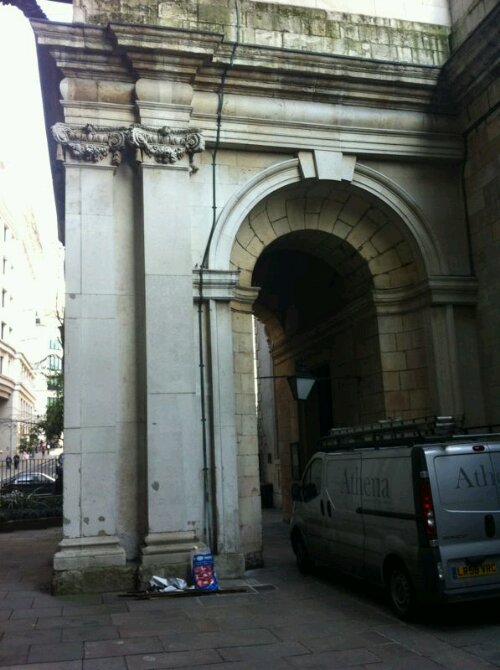
And the sign nearby
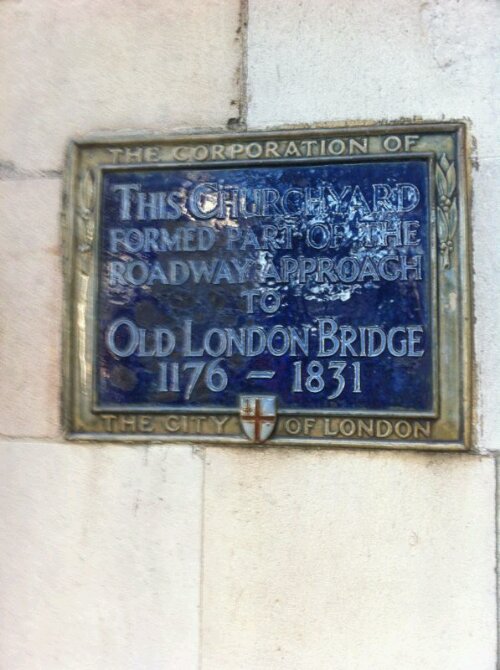
The original bridge as you will know had many buildings on it – houses, shops etc. Selling them was how they financed the building costs. In the church they have a model about 5-6 feet long showing just how many buildings were crammed onto the bridge.
On the way to St Paul’s Cathedral we went past a statue (bust) of John Donne (1572-1631): poet, satirist, lawyer and cleric in the Church of England.
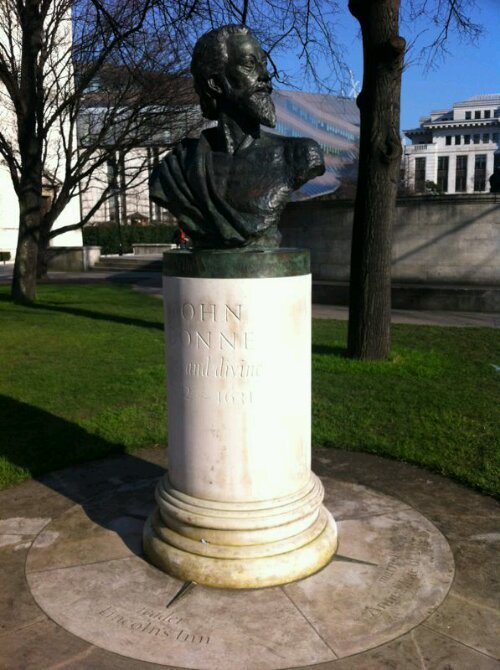
He is famous of course for a number of poems but perhaps his best known are No Man Is An Island & For Whom The Bell Tolls. As I looked at the statue I thought that probably Paul Simon would disagree with the sentiment in the first as his song I Am A Rock (from the album Sounds Of Silence released 1966 although the song began life a year or two earlier) says he’s built walls that make a fortress deep and mighty that none may penetrate; also that he has no need of friendship because friendship causes pain. Van Morrison fans - yes I am one - will know there is a tribute to the man on his album Inarticulate Speech Of The Heart and the track Rave On John Donne. (The song also references Walt Whitman, Omar Khayyam & WB Yeats.)
Then we passed a sign reminding us how the YMCA (Young Men’s Christian Association) started – no not in 1978 with The Village People! In 1844 George Williams and eleven others began it in the drapery house where GW lived and worked. The closing words on the plaque are: From its beginning in this place, inspired of God, the association grew to encompass the world.
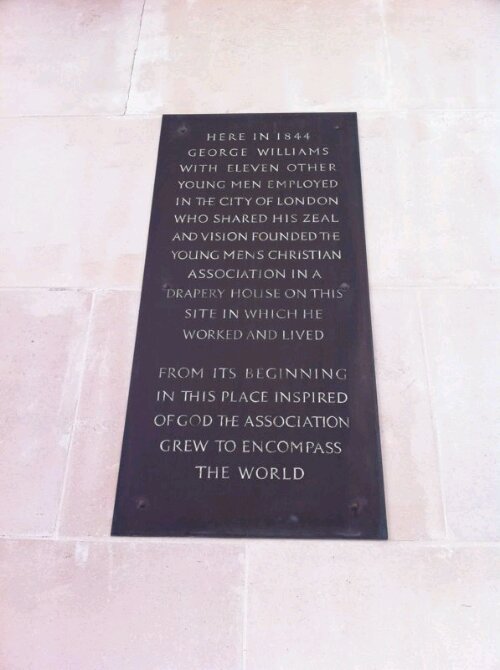
And how about this place?
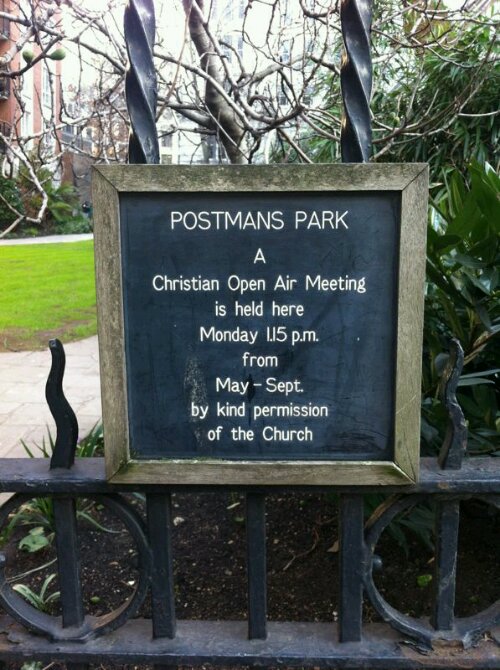
The name comes from the nearby GPO (General Post Office) Headquarters.
In 1900 the park became the site of the Memorial To Heroic Self Sacrifice (by George Frederick Watts). Basically it is a memorial to ordinary people who died saving the lives of others. Here are a couple of examples of the sort of acts commemorated
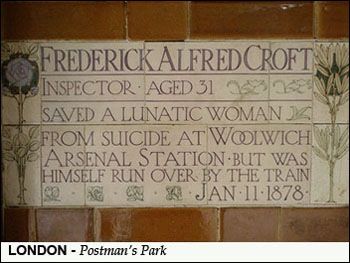
That seems a good place to take a break – with people whose only thought in that moment of incredible danger was for the person in the danger and not themselves; and their actions, whilst saving that person, actually ended up costing them their own life in the process.
I will do part 2 next week.
No comments:
Post a Comment